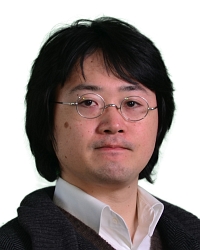TR2016-028
Iteration-Aware LDPC Code Design for Low-Power Optical Communications
-
- , "Iteration-Aware LDPC Code Design for Low-Power Optical Communications", IEEE/OSA Journal of Lightwave Technology, DOI: 10.1109/JLT.2015.2477881, Vol. 34, No. 2, pp. 573-581, January 2016.BibTeX TR2016-028 PDF
- @article{Koike-Akino2016jan,
- author = {Koike-Akino, Toshiaki and Millar, David S. and Kojima, Keisuke and Parsons, Kieran and Miyata, Yoshikuni and Sugihara, Kenya and Matsumoto, Wataru},
- title = {{Iteration-Aware LDPC Code Design for Low-Power Optical Communications}},
- journal = {IEEE/OSA Journal of Lightwave Technology},
- year = 2016,
- volume = 34,
- number = 2,
- pages = {573--581},
- month = jan,
- doi = {10.1109/JLT.2015.2477881},
- issn = {0733-8724},
- url = {https://www.merl.com/publications/TR2016-028}
- }
- , "Iteration-Aware LDPC Code Design for Low-Power Optical Communications", IEEE/OSA Journal of Lightwave Technology, DOI: 10.1109/JLT.2015.2477881, Vol. 34, No. 2, pp. 573-581, January 2016.
-
MERL Contacts:
-
Research Areas:
Abstract:
Recent low-density parity-check (LDPC) codes have shown capacity-approaching performance for various communications systems. However, their promising performance cannot always be obtained due to practical constraints such as finite codeword length, finite iteration, finite memory, and finite precision. In this paper, we focus on a practical design method of highperformance LDPC codes under a constraint of finite-iteration decoding for low-power optical communications. We introduce an iteration-aware LDPC code design approach, which is based on decoding trajectory in extrinsic information transfer (EXIT) chart analysis. It is demonstrated that an LDPC code designed by the conventional curve-fitting method exhibits nearly 2 dB of penalty when the maximum number of iterations is limited. The results suggest that the LDPC code should be adaptively changed, e.g., when the number of decoding iterations is decreased to save power consumption.We also extend our design method to a multiobjective optimization concept by taking average degrees into account, so that the threshold and the computational complexity are minimized at the same time. The proposed Pareto-optimal codes can achieve additional 2 dB gain or 50% complexity reduction at maximum, in low-power decoding scenarios.
Related News & Events
-
NEWS Toshiaki Koike-Akino gave invited talk at MIT Lincoln Laboratory by IEEE Boston Photonics Society Chapter Date: January 14, 2016
Where: MIT Lincoln Laboratory
MERL Contact: Toshiaki Koike-Akino
Research Area: CommunicationsBrief- Toshiaki Koike-Akino gave an invited talk on recent advances in LDPC Codes for high-speed optical communications in IEEE Boston Photonics Workshop.

